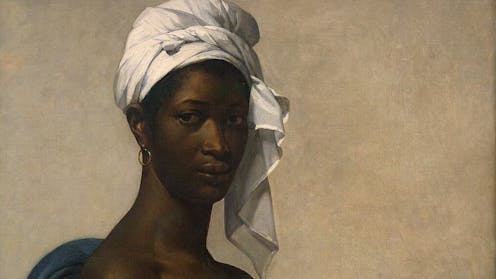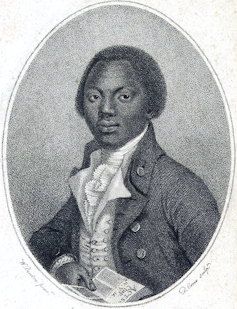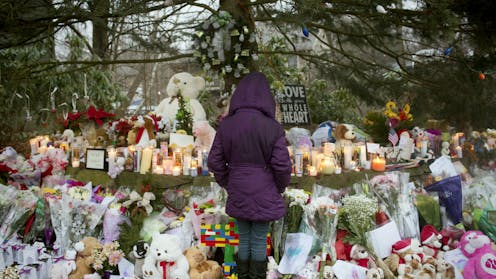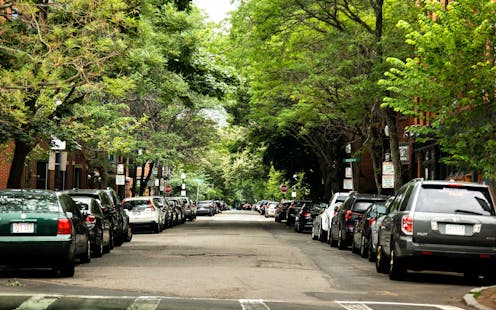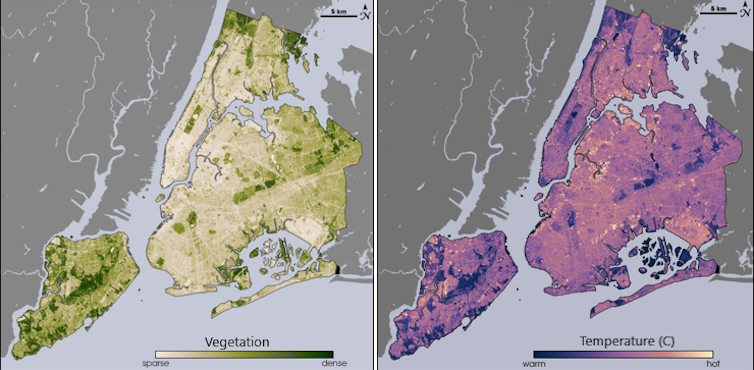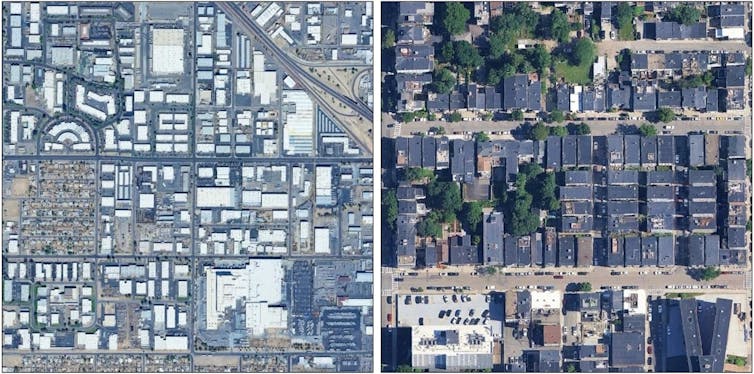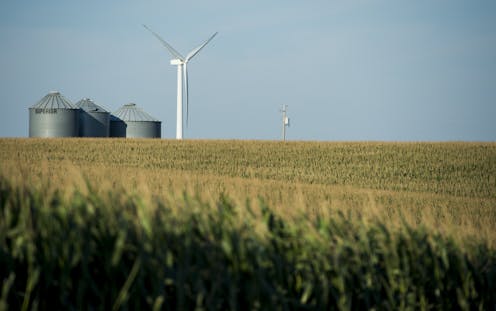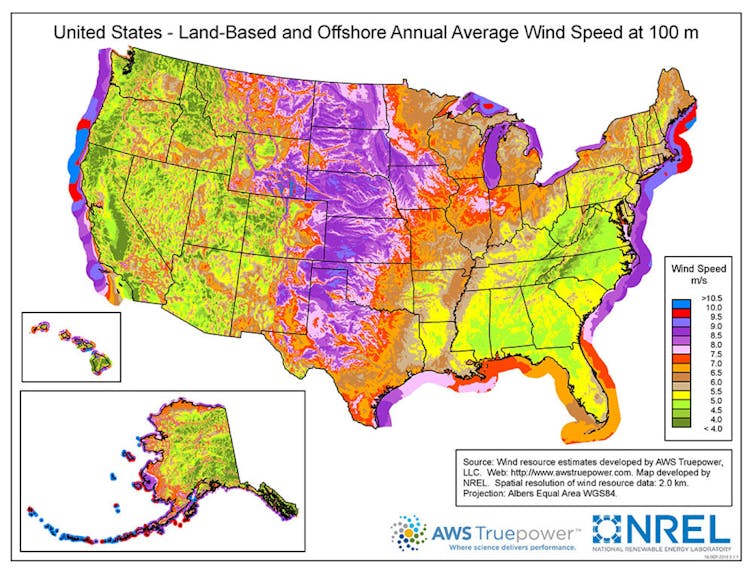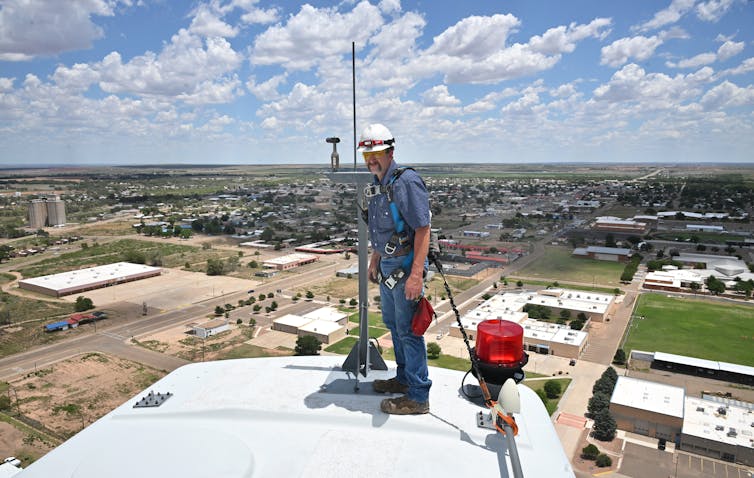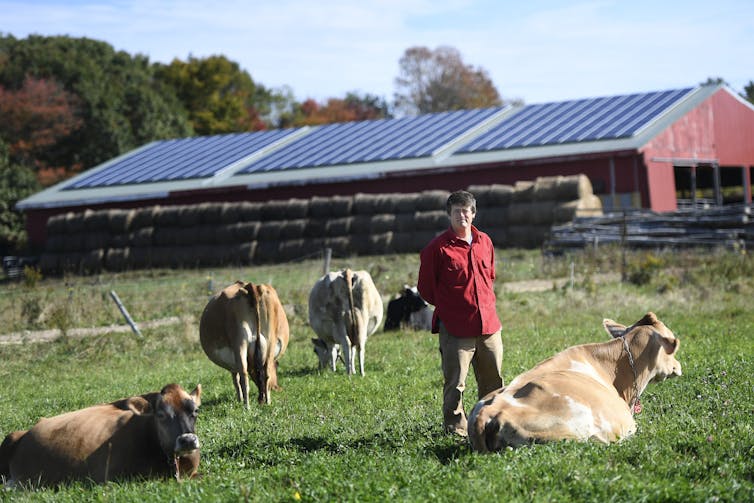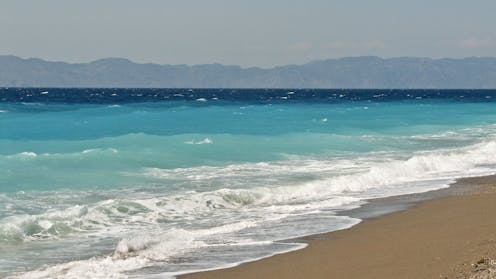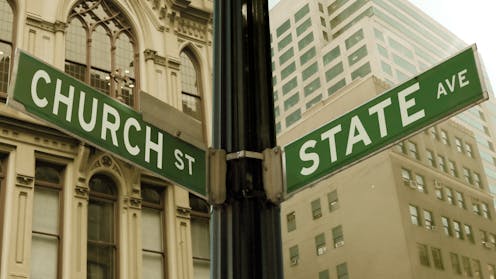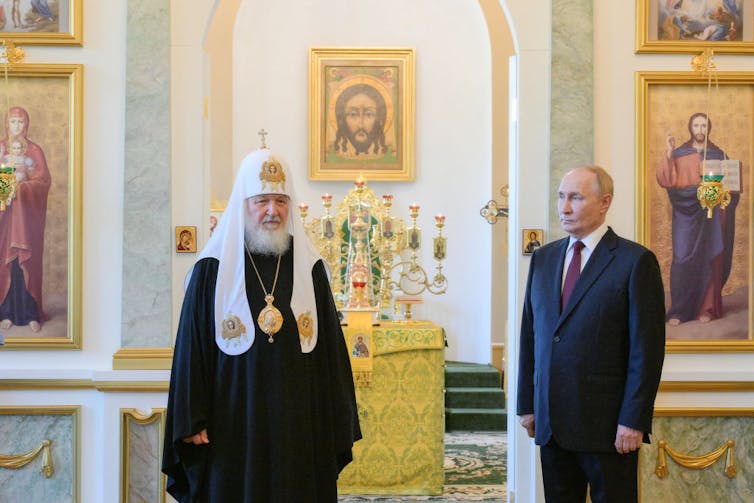Source: The Conversation – UK – By Yvonne Reddick, Reader in English Literature and Creative Writing, University of Lancashire
“Far over the misty mountains cold,” Dad read. Every evening before my light was turned out, he read me a story about a hobbit who left his comfortable burrow to journey to the Lonely Mountain. Searching for gold at the mountain’s roots, talking to eagles, scaring wolves off by starting a forest fire, tricking a dragon: these were the tales he read to me.

By Angus, CC BY-SA
We lived in a granite house on the western edge of Aberdeen. Mum planted rhubarb and runner beans in the garden. Summer holidays meant going to Aviemore, in the lap of the Cairngorm mountains. We’d stay in a wooden chalet, where knots in the pine planks looked down at me like the eyes of owls. We’d always walk near the gentle hill of Craigellachie, fledged with silver birches. I learnt to recognise the mountains: Braeriach with its three scooped-out corries, Cairngorm scarred with ski runs.
Dad knew how to disappear. Some weeks, he’d leave before dawn to take the helicopter out to the North Sea oil platforms. During summer weekends, he’d vanish for the summits of those rounded Cairngorm hills. One day, he marched in through the door with his muddy boots still on, and hoisted his battered blue Berghaus backpack onto the kitchen table, grinning:
I’ve got a surprise for you.
What is it?
He hefted out a football-sized lump of mountain quartz and put it on the table in front of me. It shone white as a glacier.
Dad’s “Munro Book” was a gift from my mum, given shortly after I was born. It was always referred to as the Munro Book, never by its title, and it detailed all of Scotland’s peaks over 3,000 feet high – first charted by the tweedy Victorian baronet, Sir Hugh Munro. Getting to the top of all 282 of them is a popular challenge for hikers. For dad, it was an obsession.
Dad was a hillwalker, but the Munro Book was written by mountaineers. It contained sentences such as: “A pleasantly airy scramble, for which some might prefer the security of a rope.” (I only ever saw Dad attempting a climbing wall once, when the two of us clambered up – and slithered off – orange and green plastic holds at a gym in Scotland.)
He never acquired the paraphernalia that winter hikers (or walkers who fancy themselves as climbers) accumulate: crampons, ice axes, ropes, the ironmongery of nut-keys, hexes and cams. However, he did claim that he scrambled up Ben More on the Isle of Mull via a route he termed “the wrong one”. It was one of his favourite stories.
The Munro Book shared bookshelves with Mountaincraft and Leadership, The Pennine Way, The South Downs Way, The Northern Fells, and 30 battered, pink Ordnance Survey maps in miles and feet.
From the age of nine, dad dragged me out with him. At first, I’d whine about the mud and midges. Later, I felt my heart lifting when I reached a cairn and could see as far as Mull and Skye. I learnt to name the whaleback of Ben Nevis.
The Insights section is committed to high-quality longform journalism. Our editors work with academics from many different backgrounds who are tackling a wide range of societal and scientific challenges.
Dad kept a weather-eye on the forecasts. His kit list included: cheese-and-pickle sandwiches; an itchy wool balaclava; a Berghaus waterproof; a survival blanket; a map, compass and GPS; spare batteries in case the ones in the GPS went flat; a second compass, in case the first compass malfunctioned; and the phone number of Mountain Rescue. All of this was crammed into the ancient blue rucksack.
Dad’s love of the outdoors developed alongside his work as an oil reservoir engineer. There are North Sea oilfields named Everest, Banff, Cairngorm and Munro. And the ease with which Dad read charts of mountains and valleys deep below the sea translated into the mathematical precision with which he navigated with map, compass and GPS.
When I was old enough to read for myself, I read The Hobbit and longed to journey through the Misty Mountains: “The mountain smoked beneath the Moon … The trees like torches blazing bright.” I’d never seen a forest fire, but even in rainy Scotland, there were signs that blazes were becoming more frequent. Just south of Loch an Eilein (the loch with the island), you came across bunches of strange brooms and paddles by the path: fire beaters, in case the heather caught alight. Aviemore was a busy ski resort in winter, but the snowline was inching higher and higher up the mountains.
I never worried about Dad. Even when he grumbled about tightness in his chest before his last holiday in the Cairngorms, it never occurred to me that the path could run out so soon.
Peak oil
Mountains rise skywards when one of Earth’s plates collides against another. Deep in the guts of great ranges, rocks fold and buckle. Ancient seabeds, turned to stone, are heaved upwards. The same rock-fold, the anticline, can forge mountains and harbour oil.
The Rockies stand on the largest reservoir of untapped shale oil in the world. The richest oilfields west of Russia are near the Carpathians. Iran’s oil and gas deposits lie at the feet of the Zagros, the high range that transects the country from north-west to south-east. North Sea oilfields are named for Highland mountains: Beinn, Schiehallion, Foinaven.
I look up a 3D schematic of an oil deposit, not unlike the one pictured below. It reminds me of a miniature massif: oil and gas seeping upwards through rock, resembling ice-falls in reverse. In place of a summit scarved with cloud, there’s a pointed deposit of trapped methane gas.
The next zone down, where a mountain’s glaciers would be, is an area on the diagram that is coloured green, showing oil. I look at a seismology map – the kind Mum used to work on in Oman. This time, the image shows a vertical cross-section through layers of rock. Its contours are shallower – more hillock than Himalayan peak. I think of knolls and hill forts – Arnside Knott on the Lancashire coast, or Torside on the shoulder of Bleaklow in the Peaks.

SEG Wiki, CC BY
Mountains and petroleum share a similar vocabulary. Exploration, frontiers, surveying. I look at graphs of peak oil production and note coincidences with the so-called golden age of mountaineering. 1854-1865: the dawn of a prolific decade of Alpine mountaineering, the time of Edward Whymper and the Matterhorn disaster. 1859: the drilling of the first oil well by the Pennsylvania Rock Oil Company in Titusville. The 1950s and ’60s saw western companies exploiting deposits in the Middle East and South America, leading to my grandfather’s time working in Venezuela and Iran. Expansion to the Earth’s highest peaks; drilling into its rocky depths.
Richard Bass, the first man to climb the “Seven Summits” – the highest peaks on each continent – ran a Texan oil-and-gas business. Black gold funded Bass’s Snowbird ski resort in Utah. The first rope access workers on North Sea oil platforms were climbers and cavers.
Many of dad’s friends found that a youthful passion for rock climbing gave them an intimate knowledge of the character of different kinds of stone, or that reading maps translated easily into mapping the deep layers of Earth’s bedrock. For a geology or engineering graduate with an enjoyment of adventure and a love of travel, a career in oil exploration was an exciting and well-paid career path.
But expanding oil frontiers and summiting the world’s highest peaks bring similar controversies. It is no coincidence that mountaineering exploits and oil extraction share common ground with colonialism, foreign control, nation-building and struggles for self-rule. Local and Indigenous people are determined to protect their land, or want a stake in the wealth of an industry whose history is mired in colonial exploitation.
I think of the far-north of Canada and Alaska – of Athabasca people either fierce in their resistance to the incursions of oil companies under the ice, or wanting their fair share of the industry’s colossal profits. Sherpas, Sherpanis and Nepalis reclaiming Mount Everest after decades of western exploitation, smashing the time records for summit successes.
Murky soot and tiny microplastics from the oil industry touch even the shining Alpine summits that I love. They taint the high snows of Everest. The cataclysmic impact of fires, blowouts and everyday fossil-fuel burning strips them of their ice. Oil is there in the mountains of plastic waste I saw on the outskirts of Himalayan towns. And perhaps the most explosive place where fossil fuels meet mountains is Azerbaijan’s Yanar Dag, which dad visited in 2002 on the back of a drunken horse.
Mountain of Fire
Nightfall in the countryside near Baku. The horses hung their heads in the stalls. Bahram the guide poured beer on their oats. They shook themselves awake, started munching. Dad hauled himself into the stirrups and thudded into the saddle like a sack of gravel: “Don’t drink and ride!” The horses began the slow plod uphill.
Rocks and thirsty thorn-scrub. A wooden bridge over a parched river. Bahram paused, dismounted, lit a cigarette and flicked the ash towards the riverbed. It touched off flame.
Wink of fire through twilight. Whiff of gasoline on the breeze. Flames surged from a blackened fissure in the rocks. Yanar Dag means Mountain of Fire. This fissure has burned for 3,000 years at least. People raised temples where priests tend eternal fires. Did fires like this inspire Zoroastrianism, one of the world’s most ancient faiths? I look up the prophet Zarathustra, glance through Nietzche’s imagining of his words. I read about Zoroastrian fire rituals and trial by flame. I read about sacred fire, symbolising the light of the deity and the illuminated mind.
Dad worked in the Caspian region when I was a teenager, flying to Baku for one week every month. He admired the Flame Tower skyscrapers, relished lamb-and-rice plov. Deals were toasted with copious quantities of vodka. I heard about Shah Deniz, the King of the Sea, a gargantuan gas field under fathoms of rock and water.
Dad longed to hike the ochre-red foothills of the Caucasus, and loved spinning yarns about “Hell’s Doorway”, the crater over a natural gas deposit that burst into flames after a Russian drilling rig collapsed. At garden parties for his colleagues back in the Home Counties, I met Bahram and Mehtab, their daughters Farah and Donya.
The Caspian seabed was tough drilling. One of Dad’s Azeri colleagues showed me a map of the bedrock, riddled with faults. Dad enjoyed the reservoir engineering challenge this posed, in much the same way he relished building Meccano or getting my second-hand Scalextric cars to work.
Forty-eight billion barrels lie under the world’s largest inland water-body. The Caspian is split into four basins; the most southerly is the deepest, divided from the others by the Apsheron Ridge. This anticline linked to the Caucasus Mountains spans the entire Caspian from Baku to Turkmenistan. The Caspian was formed by a complex interplay of plates shifting and rifting.
One of the greatest hazards for oil exploration in the region – apart from the earthquakes – are the mud volcanoes. Found near petroleum deposits and mountainous regions, these bizarre formations belch up methane, creating mucky splatter cones. They may bubble up under a body of water, or erupt on land. The rounder ones on land are known as “mud domes”; the flatter ones are sometimes referred to as “mud pies”.
Dad loved telling stories about them. Soviet scientists wanted to predict their habits, proposing that variable water levels in the Caspian, and even sunspots, might trigger their eruptions. Mud volcanoes are found in the Carpathians, the Caucasus, California, and even in the Gulf of Mexico. Dashli Island in the Caspian Sea is one giant mud volcano which exploded near an oil platform in 2021, erupting flames 500 metres high.
The Caspian region is one of the oldest oil-producing areas in the world. Troops of the emperor Cyrus the Great used Baku’s oil as an incendiary weapon. Caspian oil lit the way for Alexander the Great’s soldiers. Medieval Arab historians and travellers noted the region’s dependence on oil for heating and trade. An inscription from 1593 commemorates a manually-dug oil well near Baku.
Baku has been an oil town for centuries. An enterprising Azeri merchant drilled two oil wells in the Caspian in 1803, likely the world’s first offshore extraction, although a storm made short work of them in 1825. Robert Nobel arrived in Baku in 1873, tasked with finding walnut trees for wood to build rifles for the tsar’s army; instead, he decided to buy an oil refinery. Grainy sepia images of Russian oil production show forests of wooden derricks. In 1898, Franco-Russian filmmaker Alexandre Mishon filmed gushers and blowouts. Russian production of Azeri oil was the most prolific petroleum source on the planet from 1899 to 1901.

A. Mishon, Public domain, via Wikimedia Commons
Azerbaijan is the birthplace of many innovations: the first mechanically drilled oil-wells, the first pipelines, the first tankers. Following the collapse of the Soviet Union, competition for oil production partnerships in newly independent Azerbaijan was intense. A deal with BP in 1992 began three decades of exploration and drilling. The offshore platforms became enormous: photos show helipads, flarestacks, workers’ quarters, tangles of pipework. As the shallower oil reserves were exhausted, drilling became more ambitious. The Deepwater Gunashli platform began to pump petroleum from 175 metres below the water’s surface.
After “peak oil” – the height of demand and production – economists predict that we are entering the age of “tough oil”. Deep water, distant locations, greater danger. The oil reserves that dad and his colleagues explored were already becoming increasingly hazardous and hard to reach.
This article was a runner up in The Conversation Prize for writers, run in partnership with Faber and Curtis Brown.
![]()
Yvonne Reddick receives funding from a Leverhulme Trust International Fellowship, hosted at UCLA.
– ref. Mountains of fire: what hillwalking with my father taught me about the origins of oil exploration – https://theconversation.com/mountains-of-fire-what-hillwalking-with-my-father-taught-me-about-the-origins-of-oil-exploration-250943

